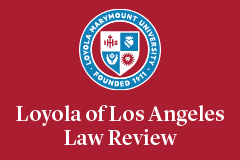Abstract
Slavery and Jim Crow inflicted horrific harms on Blacks in America. Official silence aggravated that harm, as neither victims nor their descendants received monetary restitution, nor even (until very recently) any official apology. Reparations advocates have repeatedly called for compensation to slave descendants. But how exactly does society compensate for slavery?
Of course, compensation for mass injustice is always difficult to calculate and administer. Slavery puts the normal concerns of mass compensation into sharp relief and adds a whole new set of unique concerns for courts, legislators, and scholars.
In this Article, I use slavery and Jim Crow harms as a case study to examine some of the difficult questions that arise in mass restitution cases. I argue that some reparative action is needed in the case of slavery and Jim Crow; the longstanding lack of response only reinscribes injury. However, traditional tort compensation is inadequate. Victims cannot be truly compensated-only symbolic restitution is possible. Ultimately, slavery and Jim Crow seem "too big to remedy" under the legal system.
Because true restitution is impossible, we must consider other options based on our ideas of justice. Thus, responding to slavery challenges us to rethink both the goals of restitution and our underlying conceptions of justice. Reparative measures, while they cannot make victims whole, can play important roles in society and benefit victims in other ways. I examine how the goals of restitution can be advanced though various non-tort or otherwise non-traditional approaches, including restorative justice and atonement, microreparations and apology, storytelling, and the traditional Hawaiian remedy of ho'oponopono.
Just as some insurance companies may be viewed as "too big to fail," are there some mass harms that are simply "too big to remedy"? This Article examines that question using the lens of claims arising from slavery and Jim Crow.
Recommended Citation
Kaimipono D. Wenger,
Too Big to Remedy - Rethinking Mass Restitution for Slavery and Jim Crow,
44 Loy. L.A. L. Rev. 177
(2010).
Available at: https://digitalcommons.lmu.edu/llr/vol44/iss1/8


